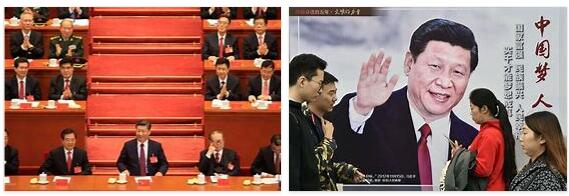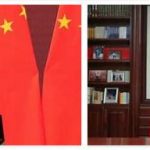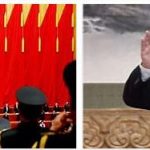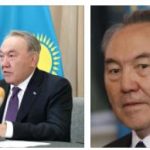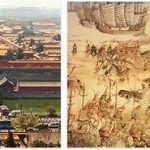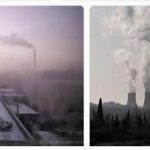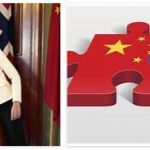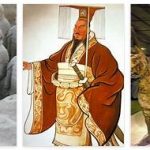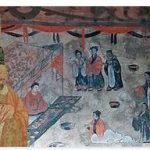Xi Jinping became President of China in 2013. From the outset, it became clear that his government would pursue a quite different policy from its predecessor Hu Jintao – both in form and content.
- What is a highway to the pinnacles of power in China?
- What challenges does Xi and the new rulers face?
- How does Xi’s policy differ from its predecessors?
- What dilemmas does the Xi regime face?
Representatives of the fifth generation (diwudai) of Chinese leaders – mainly born in the 1950s – joined the Communist Party’s Politburo and the Standing Committee there after 2007. The fifth generation has greater international experience and better education than previous generations . At the same time, this generation has better conditions for appreciating the economic progress that came with the reforms of Deng Xiaoping. This was a generation that had long experience with China’s economic take off – ever since the 1980s.
2: Up in the party hierarchy
Following the Communist Party’s People’s Congress in October 2007, two possible successors to Hu Jintao were promoted – Xi Jinping as Vice President and Li Keqiang as Deputy Prime Minister.
Xi and Li then rose to become China’s next president and prime minister at the Eighth Party Congress in 2012. Xi was a party representative from the rich Fujian province before he was quickly promoted to party leader in Shanghai when Chen Liangyu was ousted – accused of corruption in 2006 In this way, he eventually also gained many international contacts. Former President Jiang Zemin (1993–2003) had also been the leader of the Shanghai Party (1987–1989) before being appointed to succeed Deng Xiaoping. Xi is also known to belong to the prince group (taizidang) of the Communist Party. The father was the communist guerrilla leader Xi Zhongxun who participated in the Long March in northern China during the Chinese Civil War in the 1930s and 1940s. He survived a subsequent purge under the auspices of the party. With this prehistory, Xi Jinping had great ideological sympathy in the party. Xi also has connections to the People’s Liberation Army (PLA) both directly and through his wife, Peng Liyuan, who has long been a member of the PLA.
3: Big challenges
When Xi took up the presidency, the Chinese Communist Party was busy with some difficult problems on the domestic stage. Some of the challenges remained from early on during the economic reforms – including increasing inequality and income gaps between coastal and inland areas and between city and country. Despite the fact that many Chinese had experienced increased income in recent decades, poverty and underdevelopment, but also a lack of social mobility, continued to affect large parts of the country. With the global financial crisis of 2008
further pressure was put on the whole reform process. The last time the Chinese economy faced such external pressure was during the Asian financial crisis of 1997-1998. But the scale of that crisis was far smaller, and China was then far less exposed to international markets.
The Hu government tried to curb the damage to the Chinese economy when the financial crisis led to a decline in demand for Chinese goods. Among other things, it launched a comprehensive stimulus package in November of the same year. Nevertheless, growth slowed.
4: A new normal – the Chinese dream
Many in the government wanted to rebalance the Chinese economy by strengthening domestic development and consumption . But since the weight of the Chinese economy, especially in the south, was so focused on the export of industrial goods, the task was formidable. Among leading Chinese politicians, there was much talk of a ” new normal ” (xin changtai) in the development of the country’s economy. According to this, a growth rate (GDP) of seven percent would be a sufficient and achievable goal . Before the global downturn set in, annual Chinese growth was usually around ten percent.
After Xi took the presidency, he quickly announced what would become a cornerstone of Chinese politics under him, namely the Chinese dream (Zhongguo meng) – with clear reference to the American ” The American Dream” ideas from the 20th century. In this he demonstrated greater confidence in the Chinese’s own economic capabilities and opportunities. A key content of the Chinese dream was that China was in a process not only of economic growth, but also of becoming more visible and powerful at the international level. This ambitious idea was followed up in early 2015 with the launch of a policy called the four necessities , namely that the country had to: …
- become an at least moderately prosperous society ( welfare state)
- continue the reforms
- governed by law ( rule of law)
- control the party tightly
Just like previous governments, the Xi administration wanted to secure the Communist Party’s monopoly while maintaining a good relationship between the party and the people (and then growth becomes important.).
However, the future prospects for the Chinese economy remain unclear. China connoisseurs are concerned that the reforms will only come halfway and that in some cases they may even be reversed. Admittedly, China has enthusiastically pursued an “invite in” policy (encouraging foreign joint ventures and foreign investment) and an “go out into the world” policy (encouraging Chinese investors to enter international markets and prepare for to compete with foreign countries). Nevertheless, much work remains to be done on both fronts. Chinese brands must be able to achieve the same global visibility as competitors from other parts of East Asia. The Chinese already have some such visible brands in well-known sizes such as Haier and Lenovo, as well as newcomers such as Xiaomi.
Inside China, according to SHOEFRANTICS.COM, there is a heated debate about whether the liberalization of the Chinese economy should be accelerated or slowed down . The report China 2030, published by the Center for Development Research in China in 2012 together with the World Bank, recommends further reforms, more emphasis on overcoming inequality and income disparities and promoting greater economic efficiency. Xi co-authored this report. The report states that China, despite enormous economic progress over the past 20 years, is still at risk of falling into the middle-income trap. By this is meant the inability to develop beyond an intermediate level as a result of the loss of a competitive advantage (eg cheap labor). The question of the extent to which the state should stay out and in what parts of the economy it should do so, still divides the Chinese – both inside and outside the Communist Party.
